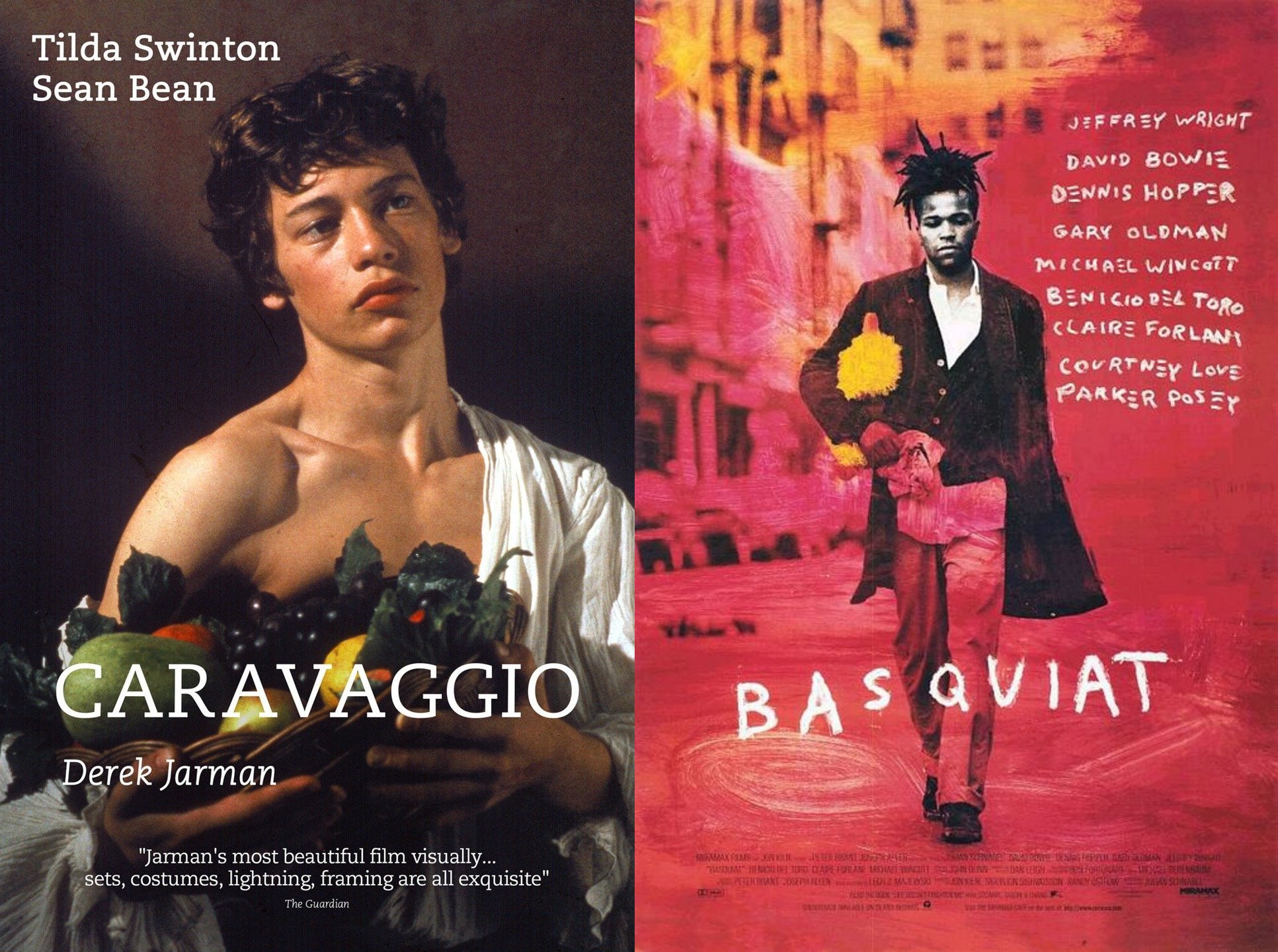March Movie Madness: An Alternate March Calendar
Tilda Swinton bursting on to the scene, Jeff Goldblum getting shaved like a wet dog, and the most protracted “Lucy in the Skies with Diamonds” joke in movie history. Hyperreal Film Club simply does not stop bringing you the best and weirdest in cinema history. But the fun doesn’t need to stop in March with our relatively restrained calendar (there was a Big Event in Austin that drew a lot of the movie-watching eyes)—HFC contributors have come together to recommend the ideal film pairings for our screenings if you left them buzzing with anticipation for more cinematic goodies.
D.E.B.S.—DOA: Dead or Alive
Okay, okay, okay. Think about it. D.E.B.S. is a 2004 action-comedy starring a 4-woman ensemble, featuring Devon Aoki as an inexplicably French chain-smoker. DOA: Dead or Alive is a 2006 action movie (that I’d argue is basically a comedy) starring a 4-woman ensemble, featuring Devon Aoki as a ninja-princess from an inexplicably Sengoku-ish ninja clan despite the moving being set in, you know, 2006.
I’ll admit I’m a little uneasy to suggest these two together because, well, while D.E.B.S. is a gorgeously funny lesbian romance, helmed by a queer director, DOA is, uh, not that. It’s an adaptation of one of the most famously sexist volleyball-nee-fighting game franchises out there and it does not shy away from embracing that particular stink.
That said, what links these two is their mid-aughts campiness in two refreshing flavors: D.E.B.S. brings a self-aware camp, winking back at you while poking fun at action tropes DOA plays straight–and DOA is a perfect example of what Sontag called naive camp, which is to say, it’s campy because it’s not trying to be. Both are extremely funny, and surprisingly earnest, and both capture the goofiness of 2000s action films that makes them still so much fun two decades out.
Caravaggio—Basquiat
By and large, I despise biopics. Which is why I found such satisfaction earlier this month when I treated myself to a double feature of Caravaggio and Basquiat. Good biopics don’t need to function as Cliff’s Notes hagiographies for their subjects, hitting each important milestone and factoid in a life intercut with some banal framing device. They are (ahem) portraits. “Do you need to know that Caravaggio killed a guy at a tennis match to appreciate his paintings?” Ironically, that’s an actual quote from Julian Schnabel, director of Basquiat.
Historicity has (controversially) never been a concern of Schnabel’s, and it certainly wasn’t one of Derek Jarman’s when he made Caravaggio. Both films take some pretty big swings in the distortion of reality: Caravaggio with its era-defying mise-en-scene and Basquiat with its mind-inhabiting filmmaking flair. And these choices help set the foundations on which these films stand their absurdly diverse ensemble acting styles. There’s too many to deconstruct but if you watch these back to back just know that you will pretty much experience the gamut of western acting techniques in the 20th century: clowning, classical, method, internal, improvisational, camp, Courtney Love, etc.
In each of these impressionistic portraits, we are shown the artist’s virtuosic gifts commercially exploited by the wealthy, appropriated by institutions, misunderstood by normies, and haphazardly wielded by the artist themself. “No hope, no fear” indeed.
Earth Girls are Easy—The Last Dragon
Are you feeling a bit of a sugar crash after Hyper Hotel’s screening of Earth Girls Are Easy? Need a little sweetly dusted ‘hair-of-the-dog’ movie recommendation to ride that sugar high just a smidge longer? If this is you, prepare yourself for second desert: Berry Gordy’s The Last Dragon (1985)! Just like Earth Girls Are Easy, The Last Dragon is a one-of-a-kind film, a musical from the 80’s, has over-the-top characters and costuming… and that is where their similarities end.
Inspired by a real-life raucous screening of Bruce Lee’s Enter The Dragon (complete with audience costumes, loud quoting of lines, and fighting in the aisles,) The Last Dragon was written to be a Kung Fu movie set in New York starring a Black protagonist. It is the story of martial artist and neighborhood hero, Bruce Leroy who is determined to achieve “The Glow” in which his body will literally glow. The roster of eccentric characters in this movie, (including but not limited to a Cyndi Lauper wannabe that dresses like a car and evil video arcade mogul with a pet killer aquatic animal) make it an immensely fun watch. If that isn’t enough to entice you, each song of the soundtrack is a Motown single that debuted in this movie, most notable amongst these is without a doubt DeBarge’s “The Rhythm of The Night”.
Is The Last Dragon like Earth Girls Are Easy? Sort of…not really… but also, yes! Both are only themselves; strong in personality and confident in their off-beat execution.
School of Rock—We Are The Best
For everyone who’s ever had a teacher or adult figure praise and cultivate their talents and encourage them to pursue their passion with all the energy in their little child bodies, School of Rock is like a warm bath. Having a compassionate, engaged adult expand your interests and open you up to new ways of thinking about the world is, in many ways, the ideal of teaching.
But punk lovers and kid musicians don’t always have an adult in their corner and the opportunity to sincerely follow their passions. In We Are The Best, a trio of Swedish 13-year-old girls find themselves bonded over a shared love of punk music and a disdain for the rules that keep them down. They, unfortunately, don’t have a Mr. Sneedly to guide them and support them, so they just do it themselves; begging for money at the railway to buy an electric guitar, learning that it’s actually still punk to sing and play in the same key, and learning to never trust punk boys. Even without the guiding force of Jack Black, We Are the Best manages to be just as heartwarming and inspiring. These girls truly live the “hardcore” life their own way, no matter what the adults and naysayers in their life might tell them.
———
If you enjoyed this article, consider supporting local film journalism by donating to the Hyperreal Film Journal on Patreon for as low as $5 a month.








remus is a cartoonist and phd candidate at the university of florida, living in austin. their favorite movie is cats (2019). unironically. you can find them on letterboxd @threewolfmoons